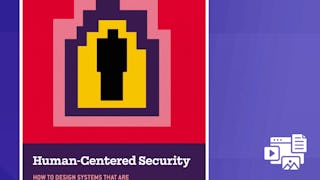Eye tracking plays a crucial role in understanding how users interact with digital interfaces. By analyzing eye movement patterns, this course equips learners with the skills to enhance user experience design through effective tracking methods. Eye tracking helps identify areas where users focus most, offering insights into interface usability, improving product design, and boosting user satisfaction.


Eye Tracking the User Experience: From Design to Analysis

Instructor: Packt - Course Instructors
Included with
Recommended experience
What you'll learn
Design stimuli and tasks that generate meaningful gaze data
Integrate eye tracking with verbal and behavioral protocols
Analyze visual attention using qualitative and quantitative methods
Skills you'll gain
Details to know

Add to your LinkedIn profile
November 2025
13 assignments
See how employees at top companies are mastering in-demand skills

There are 13 modules in this course
In this section, we clarify eye tracking for UX, detailing fixations, saccades, and usage motives, then assess when disciplined gaze analysis meaningfully enhances research outcomes and design decisions.
What's included
2 videos3 readings1 assignment
In this section, we assess when eye-tracking meaningfully augments UX research, contrast qualitative insight versus quantitative metrics, and prioritize the simplest evidence-based method for convincing stakeholders.
What's included
1 video5 readings1 assignment
In this section, we compare remote and wearable eye trackers, translate specs like sampling rate and accuracy into actionable UX insights, and plan cost-effective equipment or outsourcing supporting multi-location studies.
What's included
1 video3 readings1 assignment
In this section, we transform curiosity into testable eye-tracking research questions, align stimulus fidelity with task goals, and implement balanced within- or between-subjects designs that control sequence and sampling effects.
What's included
1 video6 readings1 assignment
In this section, we will combine eye tracking with behavioural analytics and interviews, using fixation duration to verify usability scores and turning gaze patterns into insights on comprehension, memory and clicks.
What's included
1 video1 reading1 assignment
In this section, we contrast CVP and RVP for UX eye-tracking, evaluate gaze-cued memory aids, and demonstrate targeted probing to balance reliable gaze metrics with rich qualitative user insights.
What's included
1 video1 reading1 assignment
In this section, we will learn to select eye-tracking metrics, separate attraction and performance measures, and organise area-of-interest data into user-experience insights for evidence-based design.
What's included
1 video4 readings1 assignment
In this section, we identify trackability constraints like corrective eyewear, screen participants, and apply probability and inferential statistics to determine efficient sample sizes for formative and summative eye-tracking studies.
What's included
1 video4 readings1 assignment
In this section, we will design distraction-free eye-tracking labs, pilot tasks, calibrate cameras, monitor sessions live, and log anomalies to secure reliable gaze data that drives sound user experience decisions.
What's included
1 video5 readings1 assignment
In this section, we prepare eye-tracking datasets by setting robust fixation criteria, crafting optimal AOIs, exporting measures, and cleansing anomalies, laying groundwork for trustworthy quantitative or qualitative analysis.
What's included
1 video5 readings1 assignment
In this section, we will explore gaze plots, heatmaps, and dynamic heatmaps while mastering customization, spotting usability issues, and conveying user experience research insights with persuasive eye tracking imagery.
What's included
1 video2 readings1 assignment
In this section, we will interpret fixation maps and scanpaths to classify search outcomes, pinpoint perception or comprehension failures, and generate clear, actionable user-experience recommendations.
What's included
1 video8 readings1 assignment
In this section, we will learn to choose eye tracking metrics, apply inferential statistics, and design clear graphs with confidence intervals for compelling quantitative user experience reports.
What's included
1 video3 readings1 assignment
Instructor

Offered by
Explore more from Design and Product
Why people choose Coursera for their career





Open new doors with Coursera Plus
Unlimited access to 10,000+ world-class courses, hands-on projects, and job-ready certificate programs - all included in your subscription
Advance your career with an online degree
Earn a degree from world-class universities - 100% online
Join over 3,400 global companies that choose Coursera for Business
Upskill your employees to excel in the digital economy
Frequently asked questions
Yes, you can preview the first video and view the syllabus before you enroll. You must purchase the course to access content not included in the preview.
If you decide to enroll in the course before the session start date, you will have access to all of the lecture videos and readings for the course. You’ll be able to submit assignments once the session starts.
Once you enroll and your session begins, you will have access to all videos and other resources, including reading items and the course discussion forum. You’ll be able to view and submit practice assessments, and complete required graded assignments to earn a grade and a Course Certificate.
More questions
Financial aid available,





